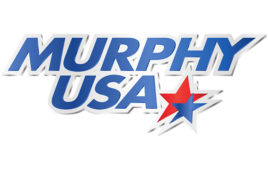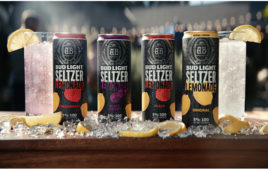If E15 becomes the norm, EMV-compliant dispensers meeting current E10 standards will be inadequate.
By Mark Radosevich
The approaching deadline for retail forecourt EMV (Europay, Mastercard and VISA) compliance has been a front burner item for many store operators and fuel marketers.
Upgrades range from around $15,000 for new fuel dispensers to $6,000 for card reader upgrade kits. Compliance must be attained by October 2020 to avoid liability under the new credit card chip reader rules. After recently attending the Motor Fuels committee meeting at the Petroleum Marketers Association of America (PMAA) Fall Conference, I think there are some factors that must be considered before dispenser investments in the industry are initiated.
HIGH-EFFICIENCY ENGINES
Illusive and seemingly unattainable Corporate Average Fuel Economy (CAFE) mandates have prompted original equipment manufacturers (OEM) to meet the new miles per gallon targets by seeking a higher gasoline octane grade; 95RON. Without going into the complexities of this new fuel, the key take away is that if mandated, it will require dispenser upgrades to prevent mis-fueling by motorists attempting to dispense lower gasoline grades into new vehicles, just a few years after the EMV deadline had passed.
This higher octane blend has the renewable fuels folks giddy over the prospect that the higher octane boost could be provided by ethanol and as a result spur universal E15 adoption. Current dispensing equipment is not rated to accept ethanol blends beyond E10 and liability from equipment failure and related environmental consequences from usage of E15 falls on the retail operator or the fuel marketer.
Thus, if E15 become the norm, EMV compliant dispensers meeting current E10 standards will be inadequate. The current solution is to invest an added $7,000 for new flex fuel equipment bringing the cost of a new dispenser to around $22,000.
DEALER BRANDING
After considering these potential post-EMV compliance investments, marketers would be wise to take a pragmatic, longer term assessment when deciding to brand average to marginal dealer sites. A closer view of a site’s competitive situation and market trends should be made to ascertain whether the store will be viable through the term of the supply agreement. Mid-stream failure due to these costly compliance items will result in marketer assumption of unamortized brand monies and other related expenses.
Here’s another interesting tidbit that came out of the Motor Fuels committee meeting that should set marketers’ heads a spinning. In an effort to meet the aforementioned CAFE mileage standards and reduced emission levels, various automobile OEM’s have developed Gasoline Direct Injection (GDI) engines.
With a GDI engine, the fuel is injected directly into the compression chamber below the valves. As such, the valves are not the beneficiary of the marvelous fuel additives that our petroleum suppliers have perfected to deliver tremendous cleansing benefits. In other words, the best formulations of gasoline ever developed are wasted because the fuel never touches the areas needing to be cleaned.
As a result, widespread engine problems are cropping up once new GDI vehicles hit the 30,000 to 60,000 mile mark, whereupon the check engine light comes on, alerting the owner that there is an issue with their engine’s performance. To further highlight the disconnect between oil suppliers and the auto industry, GDI manufacturers now recommend changing the vehicle’s oil on a more frequent basis, despite the effort that lubricant manufacturers have made over the years to perfect revolutionary longer-life engine oils.
However, research indicates that more frequent oil changes does not rectify the problem. (Google the subject for a deeper dive into this unreal situation and for a listing of affected vehicles.) The primary take-away for retail petroleum operators is to understand the condition and be able to explain it to disgruntled customers blaming a store’s gasoline for causing their engine problems.
These unique and costly issues highlight the importance of active membership with one’s state petroleum marketers association (and through them the PMAA). They are your first line of defense against illogical and misguided governmental legislative and regulatory interference destined to harm your business. Please feel free to email me if you’re interested in learning more and I’ll connect you with your appropriate state association leadership.
Mark Radosevich is a strong industry advocate and 38-year petroleum professional. He is president of PetroActive Real Estate Services. Contact him at [email protected] or call (423) 442-1327. His professional bio and other company info can be found at www.petroactive.net.




